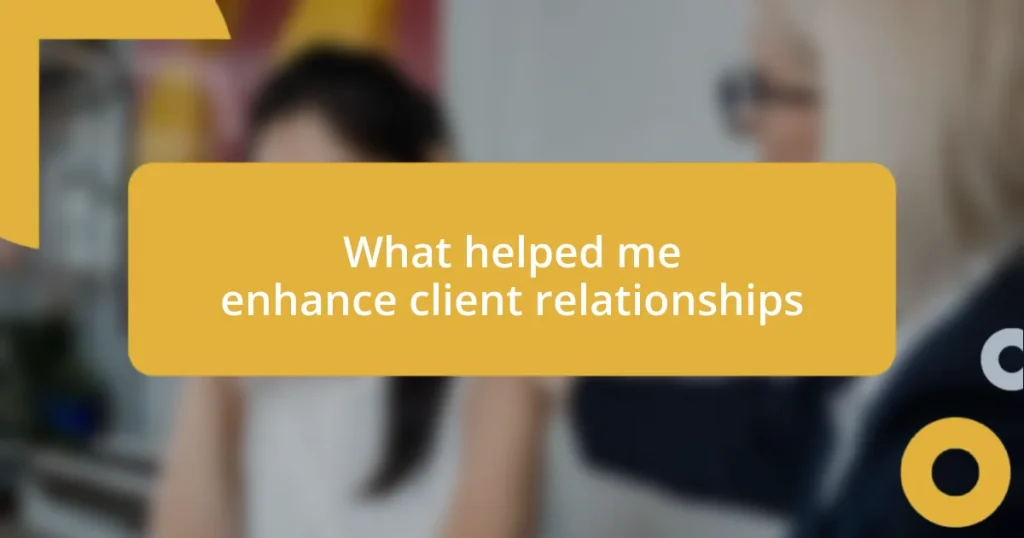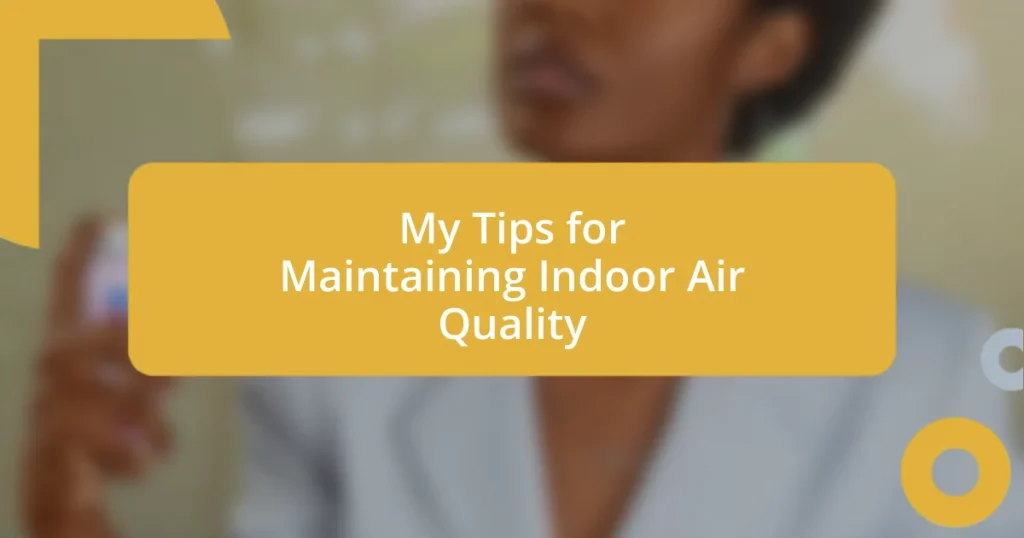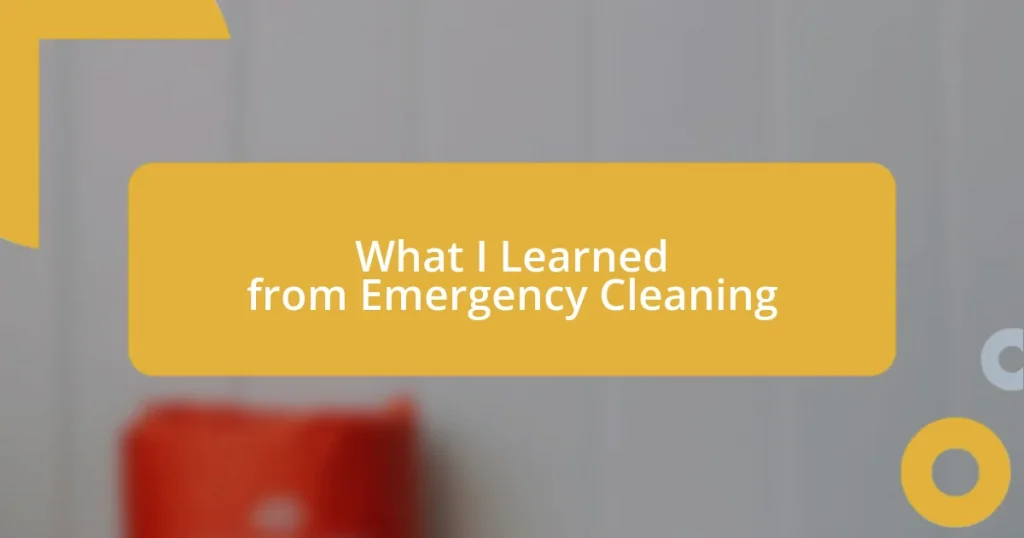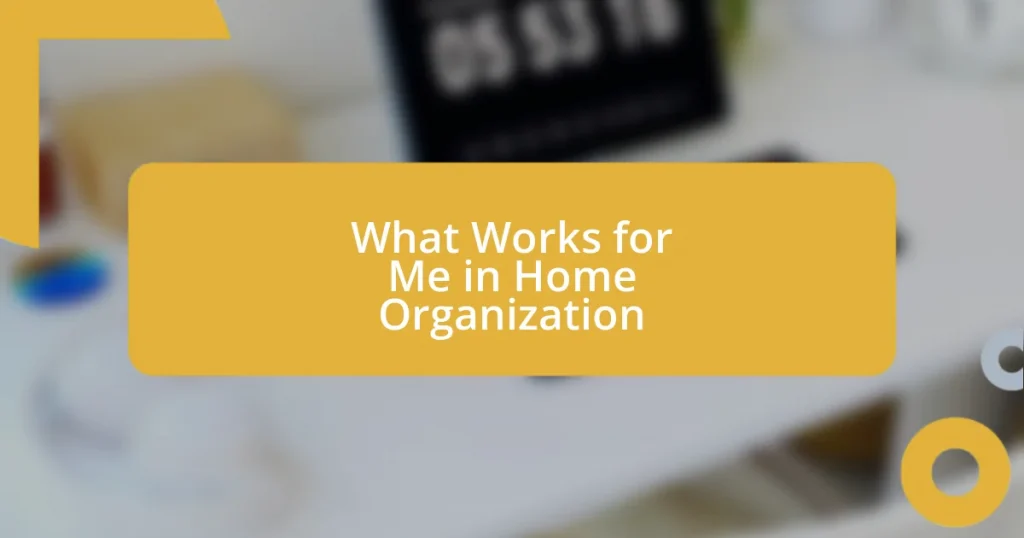Key takeaways:
- Building trust is achieved through consistency, transparency, and vulnerability in client interactions.
- Effective communication involves active listening, open-ended questions, and awareness of non-verbal cues to strengthen relationships.
- Personalizing interactions and leveraging technology enhances client relationships by making them feel valued and understood.

Building trust with clients
Building trust with clients is foundational, and I’ve learned that consistency is essential. For instance, I once had a client who was skeptical about my services because of past experiences. By consistently delivering on my promises and maintaining open lines of communication, I watched that skepticism transform into genuine trust, which noticeably strengthened our relationship.
One of the most powerful ways I’ve built trust is by being transparent. I remember a time when I had to share some not-so-great news about a project delay. Instead of sugarcoating it, I owned up to the situation. I explained the reasons behind the delay and outlined the steps we would take to resolve the issue. That honesty not only reassured my client but also deepened our connection, prompting them to feel comfortable enough to share their own concerns in future projects.
Have you ever thought about how vulnerability can actually enhance trust? I’ve found that when I share a bit about my own challenges or mistakes, it helps clients see me as more than just a service provider, but as a partner. By showing my human side, I’ve fostered relationships that go beyond just business; they become collaborative journeys where both parties feel invested and valued.

Effective communication techniques
Effective communication is the bridge that connects service providers and clients. I remember an instance when I utilized active listening during a client meeting. Instead of merely waiting for my turn to speak, I focused entirely on what the client was saying. Their concerns about timeline changes began to dwindle, and I could feel the atmosphere lighten. By genuinely engaging in conversation, I demonstrated that their input was valued, which dramatically improved our working relationship.
One of the simplest yet most effective techniques I’ve adopted is asking open-ended questions. When clients feel comfortable to express themselves freely, it provides me with a wealth of insight into their needs. In one memorable conversation, I asked a client, “What would make this project a success for you?” Their response opened a door to new ideas I hadn’t even considered, transforming the project into a collaboration rather than a transaction. That moment taught me how powerful it is to encourage dialogue rather than just providing answers.
Additionally, I’ve learned the importance of non-verbal cues in communication. During virtual meetings, I always pay attention to body language and facial expressions. For instance, I recall a video call with a client whose initial enthusiasm waned as I presented the project’s complexities. Recognizing this shift, I paused and invited them to share their thoughts. Reshaping the conversation to gauge their emotions not only cleared the air but allowed us to brainstorm solutions together. Connecting on an emotional level reinforced our relationship and made the tough discussions feel less daunting.
| Technique | Description |
|---|---|
| Active Listening | Fully engaging with what the client is saying to demonstrate understanding. |
| Open-Ended Questions | Asking questions that require more than a yes or no answer encourages deeper dialogue. |
| Non-Verbal Communication | Paying attention to body language and facial expressions can provide insights into client feelings. |

Understanding client needs deeply
Understanding client needs goes beyond just acknowledging their requests; it involves a deeper dive into their motivations and desires. I remember sitting down with a long-term client who seemed distant during our meetings. It struck me that I had been focusing too much on the tasks rather than understanding the bigger picture driving their decisions. After asking about their long-term vision, I realized they were grappling with company culture changes that significantly impacted our project. This revelation reshaped my approach, allowing me to provide solutions that resonated with their actual needs, rather than just what was on the surface.
- Empathy: I consistently remind myself to step into my clients’ shoes. Understanding their challenges and objectives helps me respond with greater insight.
- Regular Check-ins: Scheduling consistent touchpoints gives clients the opportunity to voice evolving needs. This practice has often led me to uncover new areas where I can support them better.
- Feedback Loops: I encourage honest feedback after each interaction, which has been instrumental in evolving my service to align closely with client expectations. It’s surprising how just asking “How did that go for you?” can illuminate areas for improvement.

Consistent follow-up processes
Establishing a consistent follow-up process has been a game-changer for my client relationships. I vividly remember when I began putting reminders in my calendar for post-meeting check-ins. It turned a simple conversation into a two-way street, allowing clients to see that I genuinely cared about their concerns well after our discussions. This small change often led to deeper conversations about their evolving needs.
Interestingly, I also learned the value of varying my follow-up methods. Sometimes I send a quick email summarizing our chat, while other times, I pick up the phone for a more personal touch. I once called a client just to ask how they were feeling about a project we’d just wrapped up. That simple gesture led to a candid exchange that revealed some areas for improvement I hadn’t anticipated. Have you ever experienced a moment when a small action transformed a professional relationship?
Moreover, incorporating a follow-up tracker has made my process more systematic. I recall feeling overwhelmed managing multiple clients and their projects. So, I developed a simple tracking sheet that not only reminded me to follow up but also kept notes on individual client preferences and pain points. This approach helped me personalize my communication and showed clients that I recognized their unique circumstances, reinforcing the trust in our partnership. It was surprising to see how such a transparent process could turn fleeting interactions into lasting bonds.

Personalizing client interactions
When it comes to personalizing client interactions, I’ve found that little details can make a substantial impact. For instance, during a catch-up with a client, I noticed a family photo in the background of their video call. Instead of bouncing straight into business, I asked about their kids and discovered they were heavily involved in sports. What followed was a natural conversation that wasn’t just about work; it built a personal connection. Moments like these show that taking time to engage on a personal level can enrich our professional bond.
I also learned a valuable lesson from a client who once shared her frustration about feeling like “just another account.” It struck me how vital it is to remember that behind every project, there’s a person with dreams and concerns. I started to remember personal milestones and check in on her progress, not just business-related tasks. The joy I felt when she expressed appreciation for my thoughtfulness helped me realize that investing in individual relationships fosters loyalty and collaboration. Have you ever considered how much a little personalization could change the dynamics of your client interactions?
Tailoring my communication style to resonate with each client has been transformative. I once had a client who appreciated directness and deadlines, while another thrived on storytelling and big-picture discussions. By adjusting my approach based on what works for each person, I found that our conversations became more productive and engaging. Wouldn’t you agree that knowing your client on a deeper level not only enhances understanding but also drives better results for both parties? Embracing these nuances has certainly made my client relationships stronger and more enjoyable.

Leveraging technology for relationships
I’ve discovered that leveraging technology in client interactions can create remarkable efficiencies and foster stronger relationships. For instance, the introduction of a customer relationship management (CRM) tool transformed how I engage with clients. I can now streamline communication, track interactions, and set reminders for follow-ups all in one place. Do you know how empowering it feels to have client history at your fingertips? I’ll never forget the first time I used my CRM to revisit a critical point from a past discussion, leading to an insightful follow-up that deepened our partnership.
Additionally, utilizing video conferencing tools opened up new avenues for connection in our digital world. I remember hosting a virtual coffee chat with a client across the country. Even though we were miles apart, we were able to share stories just like we would in a local café. In that relaxed atmosphere, they shared challenges I hadn’t known about, which led to brainstorming solutions together. Have you found that informal setups can lead to breakthroughs in understanding? The beauty of technology lies in its ability to break barriers and create a sense of closeness.
Moreover, automating routine tasks has given me more time to focus on nurturing those relationships. By using chatbots for common inquiries, I was able to respond instantly to clients while spending more time on strategic planning. One memorable instance was when a client reached out late at night with a critical question. Thanks to the chatbot, I was able to provide an immediate answer, which reassured them and demonstrated our commitment. How satisfying is it to use tech not just for efficiency, but for demonstrating that you truly care for your clients’ needs? Embracing technology has not only refined my processes but also deepened my emotional connections with clients in meaningful ways.
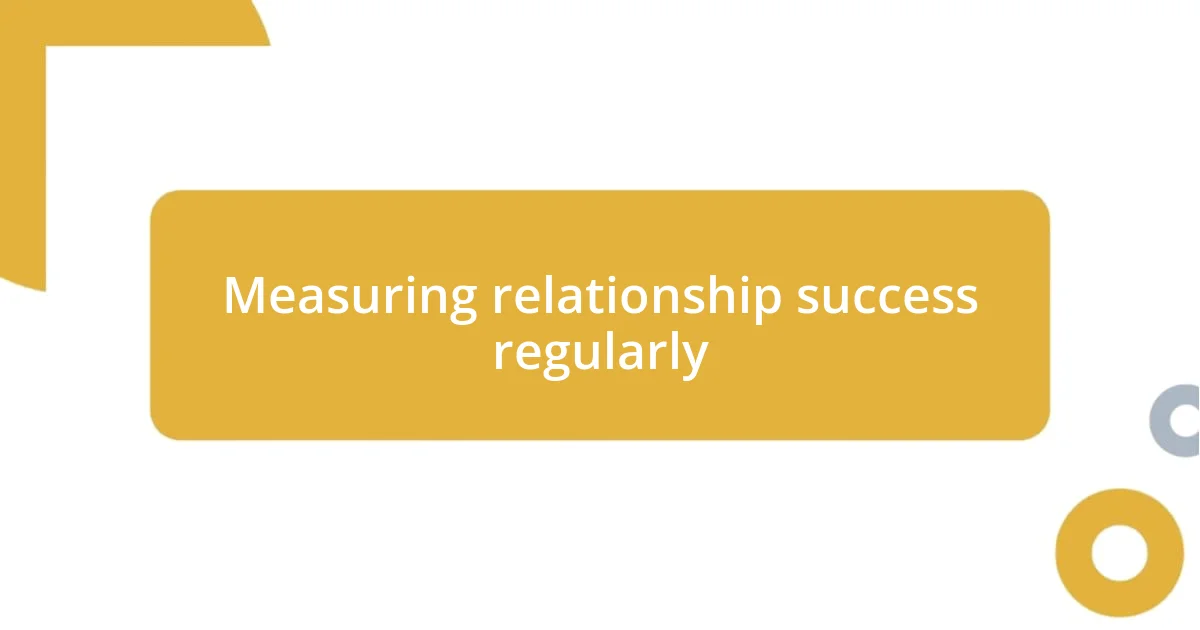
Measuring relationship success regularly
Measuring relationship success regularly is something I’ve grown to prioritize in my practice. I’ve set up simple quarterly check-ins to evaluate how clients feel about our collaboration. For example, I once learned through a feedback session that a client valued timely updates but felt left in the dark after major milestones. Adjusting my communication to include those updates made a remarkable difference; suddenly, they felt more involved and appreciated.
I also utilize surveys to capture insights on client satisfaction. It’s enlightening to see what resonates with clients and what aspects might need fine-tuning. A few months ago, I sent out a quick survey to reflect on our project’s progress. The candid responses highlighted that while they loved my enthusiasm, they craved more strategic insight on next steps. Hearing directly from them helped me adapt my approach moving forward.
Furthermore, I find it essential to review these measures not just for numbers but to gauge emotional connections. An instance that stands out for me was reflecting on a challenging project where tensions ran high. By recognizing this during my check-in, we could address the underlying issues openly and transform the relationship into one built on trust. How often do we consider the emotional temperature of our professional interactions? Regular assessment allows me to foster a deeper understanding and make meaningful adjustments that truly benefit my clients.










